<< Our Photo Pages >> Chavín de Huantar - Ancient Village or Settlement in Peru
Submitted by Andy B on Sunday, 21 November 2010 Page Views: 11746
Multi-periodSite Name: Chavín de Huantar Alternative Name: Chavin de HuantarCountry: Peru Type: Ancient Village or Settlement
Latitude: 9.592775S Longitude: 77.178453W
Condition:
| 5 | Perfect |
| 4 | Almost Perfect |
| 3 | Reasonable but with some damage |
| 2 | Ruined but still recognisable as an ancient site |
| 1 | Pretty much destroyed, possibly visible as crop marks |
| 0 | No data. |
| -1 | Completely destroyed |
| 5 | Superb |
| 4 | Good |
| 3 | Ordinary |
| 2 | Not Good |
| 1 | Awful |
| 0 | No data. |
| 5 | Can be driven to, probably with disabled access |
| 4 | Short walk on a footpath |
| 3 | Requiring a bit more of a walk |
| 2 | A long walk |
| 1 | In the middle of nowhere, a nightmare to find |
| 0 | No data. |
| 5 | co-ordinates taken by GPS or official recorded co-ordinates |
| 4 | co-ordinates scaled from a detailed map |
| 3 | co-ordinates scaled from a bad map |
| 2 | co-ordinates of the nearest village |
| 1 | co-ordinates of the nearest town |
| 0 | no data |
Be the first person to rate this site - see the 'Contribute!' box in the right hand menu.
Internal Links:
External Links:
I have visited· I would like to visit
bat400 visited on 2nd Sep 2018 - their rating: Cond: 3 Amb: 4 Access: 4
ModernExplorers visited on 22nd Oct 2003 - their rating: Cond: 3 Amb: 3 Access: 3 Interesting ruins set amongst beautiful scenery
Average ratings for this site from all visit loggers: Condition: 3 Ambience: 3.5 Access: 3.5

The site is located 250 kilometers (160 mi) north of Lima, Peru, at an elevation of 3,200 meters (10,500 ft), east of the Cordillera Blanca at the start of the Conchucos Valley. Chavín de Huántar has been designated a UNESCO World Heritage Site. Some of the Chavín relics from this archaeological site are on display in the Museo de la Nación and the Museo Nacional de Chavín in Lima.
Chavín de Huántar has been carbon dated to 850 BCE. While the fairly large population was based on an agricultural economy, the city's location at the headwaters of the Marañón River, between the coast and the jungle, made it an ideal location for the dissemination and collection of both ideas and material goods. This archeological site is a large ceremonial center that has revealed a great deal about the Chavín culture. Chavín de Huántar served as a gathering place for people of the region to come together and worship. The transformation of the center into a valley-dominating monument had a complex effect; it became a pan-regional place of importance. People went to Chavin de Huantar as a center: to attend and participate in rituals, consult an oracle, or enter a cult
Read more at Wikipedia
Note: Conch shell trumpet. “It’s not very imposing over loudspeakers, but in person it rattles your bones.” See comments.
You may be viewing yesterday's version of this page. To see the most up to date information please register for a free account.
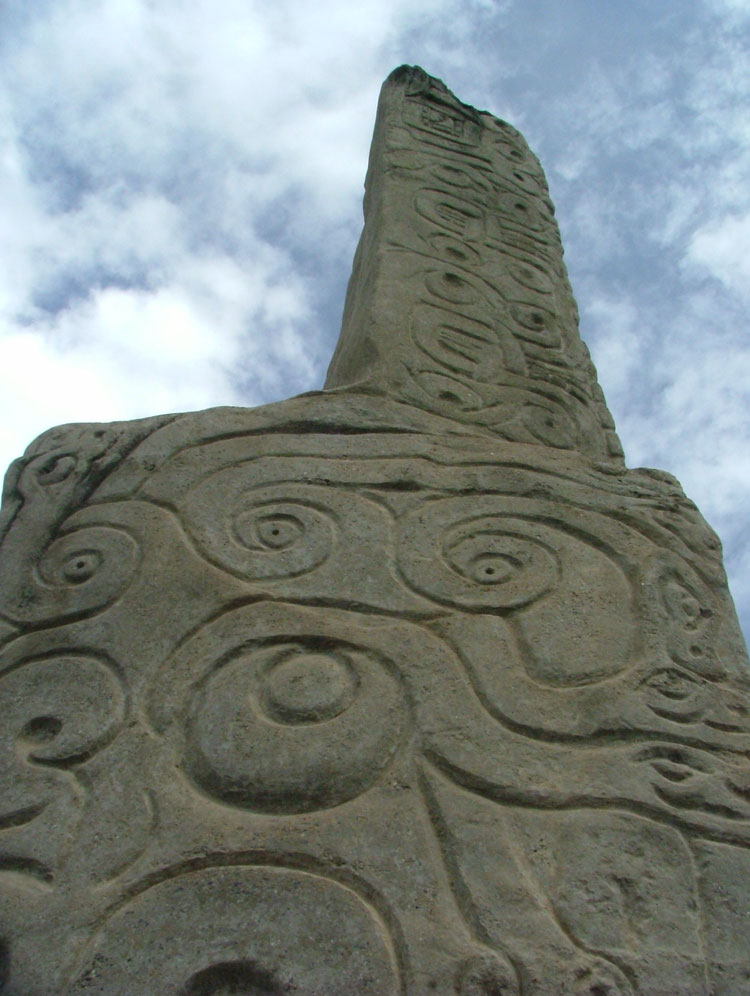
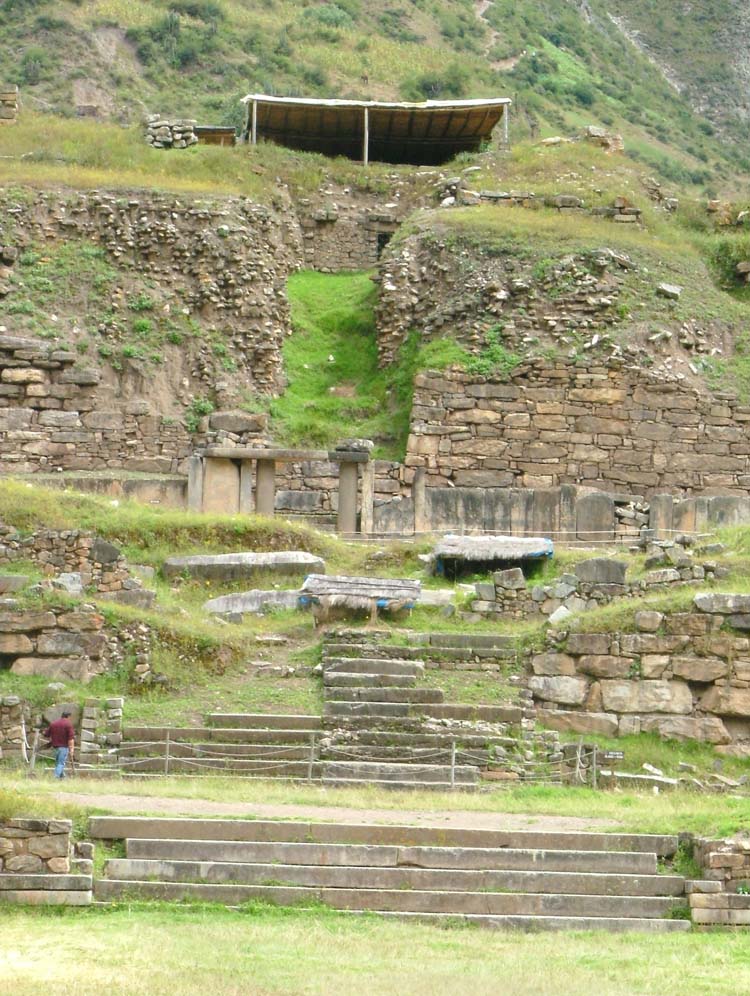
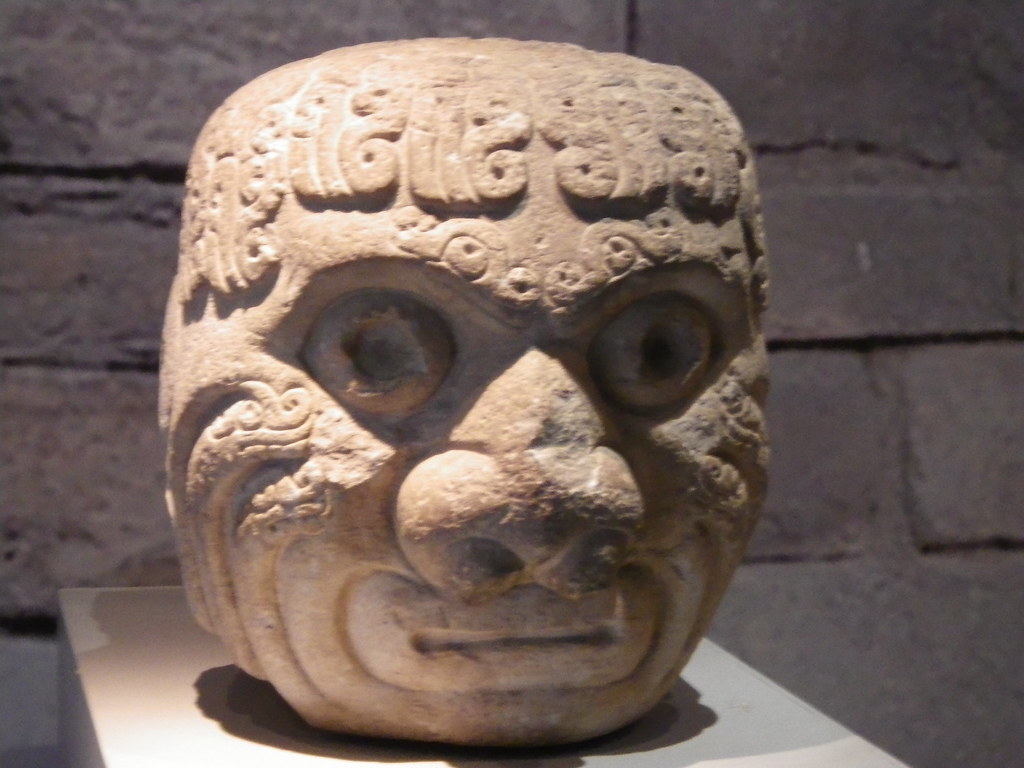

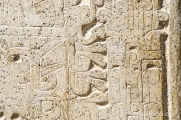
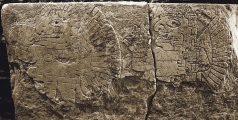
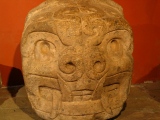



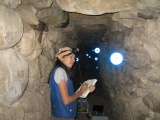
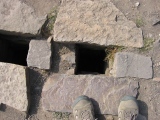

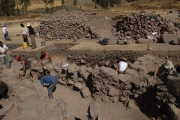


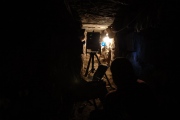
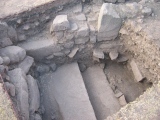

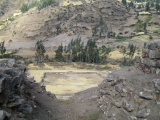
Do not use the above information on other web sites or publications without permission of the contributor.
Click here to see more info for this site
Nearby sites
Click here to view sites on an interactive map of the areaKey: Red: member's photo, Blue: 3rd party photo, Yellow: other image, Green: no photo - please go there and take one, Grey: site destroyed
Download sites to:
KML (Google Earth)
GPX (GPS waypoints)
CSV (Garmin/Navman)
CSV (Excel)
To unlock full downloads you need to sign up as a Contributory Member. Otherwise downloads are limited to 50 sites.
Turn off the page maps and other distractions
Nearby sites listing. In the following links * = Image available
33.1km S 191° Pastoruri Road Rock Art
37.9km WNW 288° Ichik Willkawain* Chambered Tomb
38.5km WNW 288° Willkawain* Chambered Tomb
39.1km W 280° Museo Regional de Áncash Museum
50.5km ESE 106° Saway Ancient Village or Settlement
50.8km SE 128° Wanuku Pampa* Ancient Village or Settlement
56.8km ENE 66° Piruro Hillfort
57.3km ENE 68° Susupillo Hillfort
60.6km ESE 107° Castillo de Chupan Ancient Palace
64.8km ESE 105° Mancopa Ancient Village or Settlement
72.8km NW 307° Guitarrero Cave* Cave or Rock Shelter
89.7km W 274° Pallka Ancient Village or Settlement
93.1km NW 311° Tumshukayko* Ancient Village or Settlement
105.5km ESE 111° Kotosh* Ancient Village or Settlement
107.7km SSW 212° Shaura Ancient Village or Settlement
108.8km ESE 111° Shillacoto Ancient Temple
110.1km SSW 213° Cerro de la Cruz Ancient Village or Settlement
111.9km WNW 283° Huerequeque Ancient Village or Settlement
114.9km W 275° Pampa de Las Llamas - Moxeque Ancient Village or Settlement
115.1km W 272° Chankillo - 13 Towers* Ancient Temple
116.0km W 272° Chankillo Fortress* Ancient Temple
116.2km WSW 243° El Castillo de Huarmey* Pyramid / Mastaba
116.9km W 273° La Cantina Ancient Village or Settlement
117.5km W 277° Sechin Alto Ancient Village or Settlement
118.5km SSW 212° Huaricanga Artificial Mound
View more nearby sites and additional images



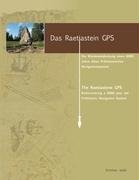

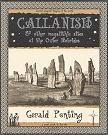
 We would like to know more about this location. Please feel free to add a brief description and any relevant information in your own language.
We would like to know more about this location. Please feel free to add a brief description and any relevant information in your own language. Wir möchten mehr über diese Stätte erfahren. Bitte zögern Sie nicht, eine kurze Beschreibung und relevante Informationen in Deutsch hinzuzufügen.
Wir möchten mehr über diese Stätte erfahren. Bitte zögern Sie nicht, eine kurze Beschreibung und relevante Informationen in Deutsch hinzuzufügen. Nous aimerions en savoir encore un peu sur les lieux. S'il vous plaît n'hesitez pas à ajouter une courte description et tous les renseignements pertinents dans votre propre langue.
Nous aimerions en savoir encore un peu sur les lieux. S'il vous plaît n'hesitez pas à ajouter une courte description et tous les renseignements pertinents dans votre propre langue. Quisieramos informarnos un poco más de las lugares. No dude en añadir una breve descripción y otros datos relevantes en su propio idioma.
Quisieramos informarnos un poco más de las lugares. No dude en añadir una breve descripción y otros datos relevantes en su propio idioma.